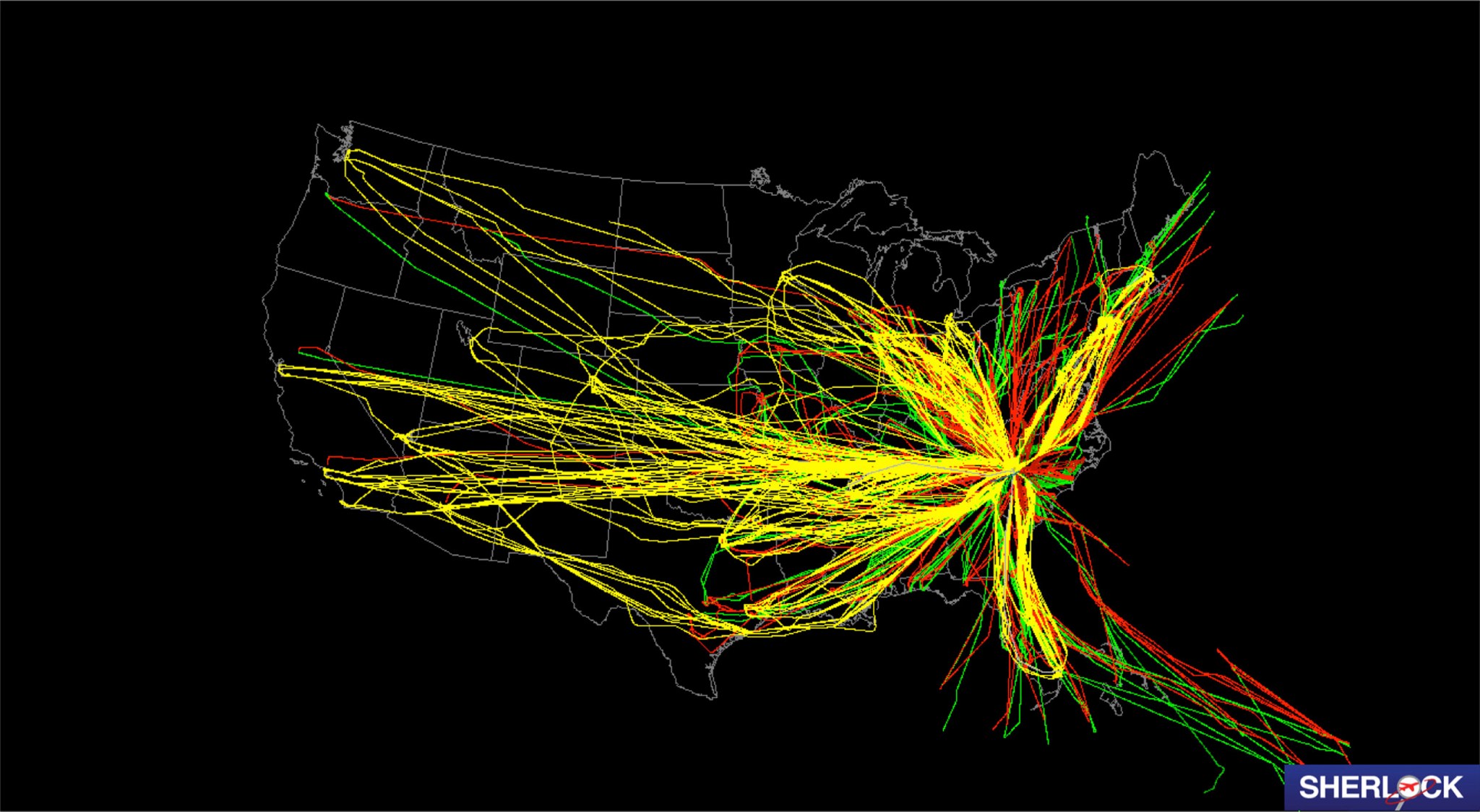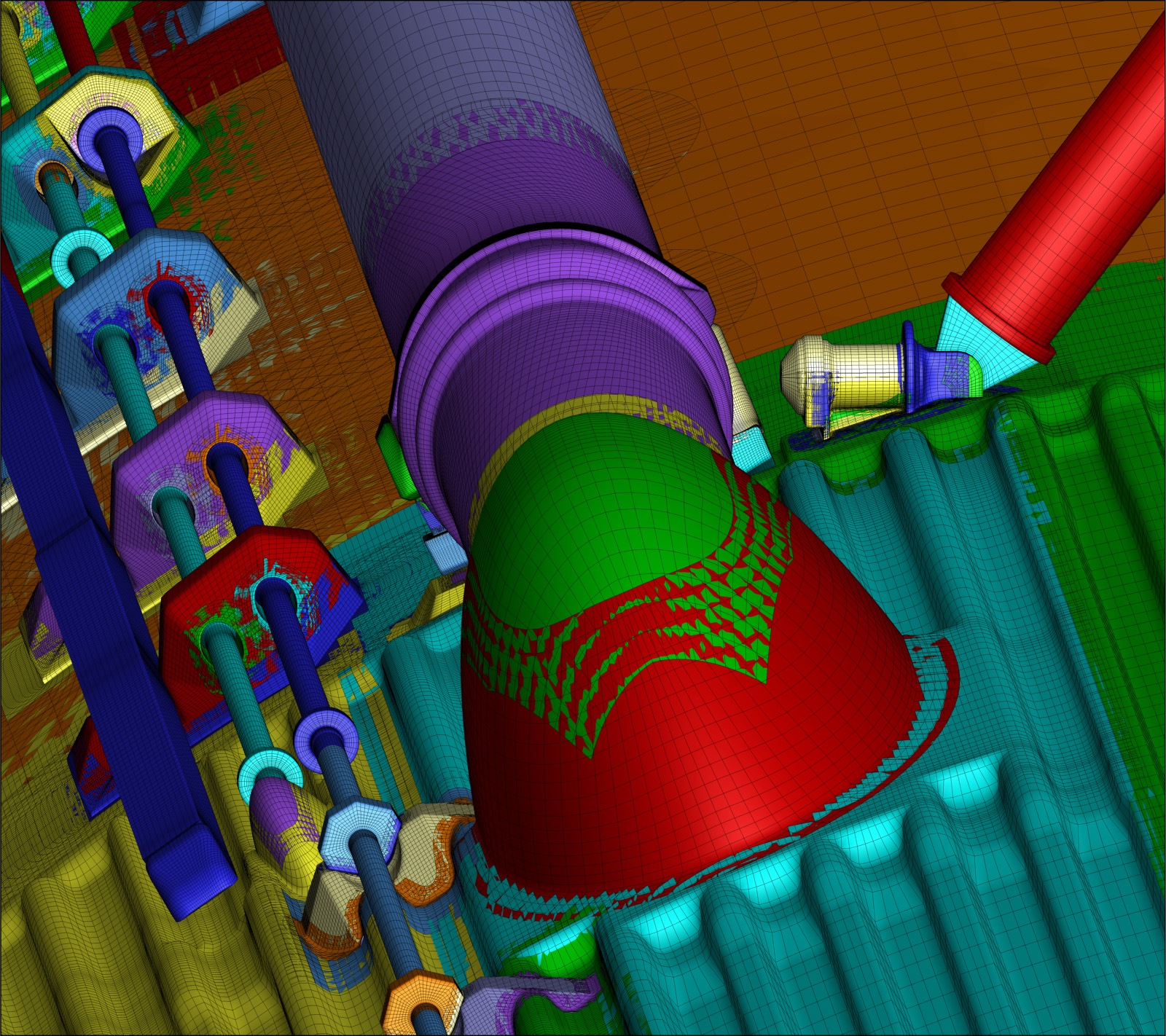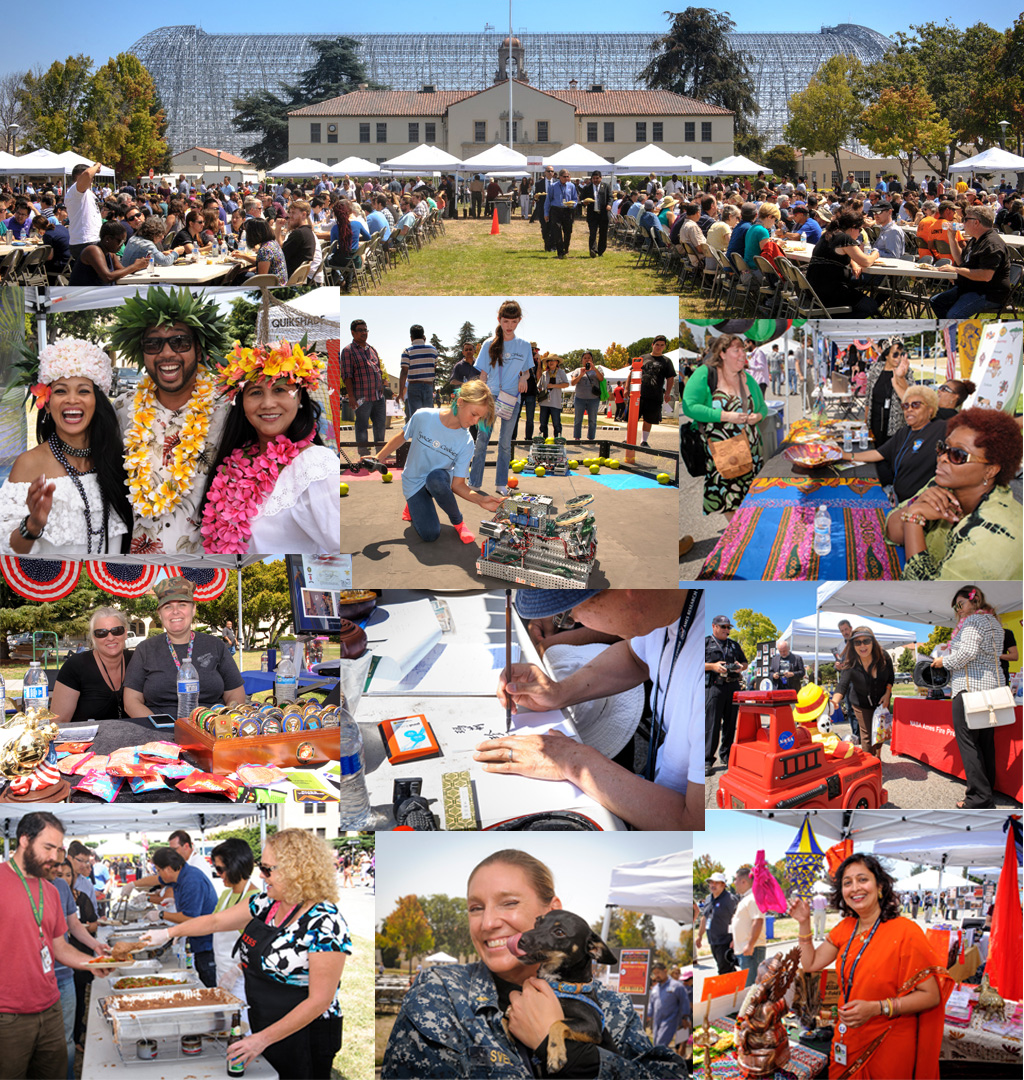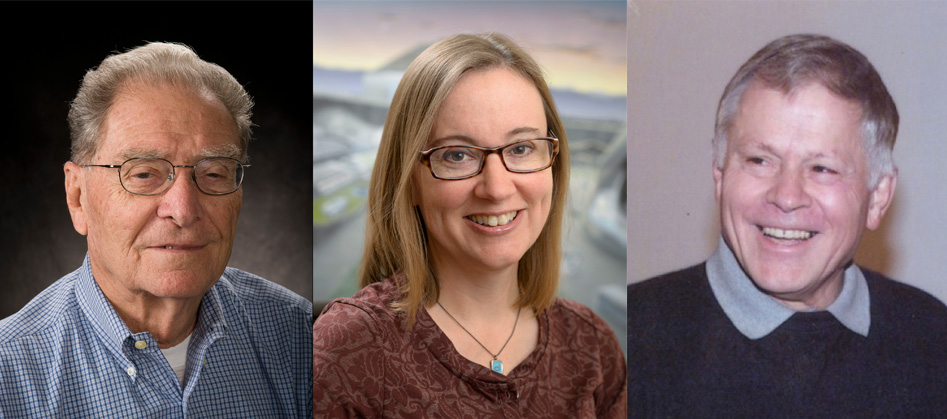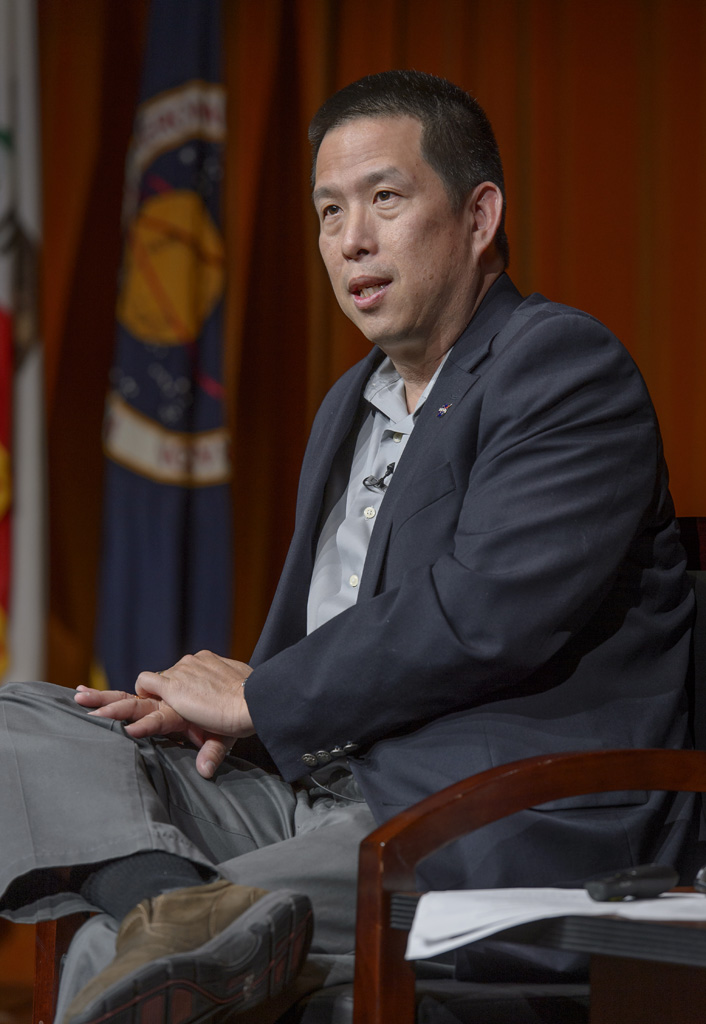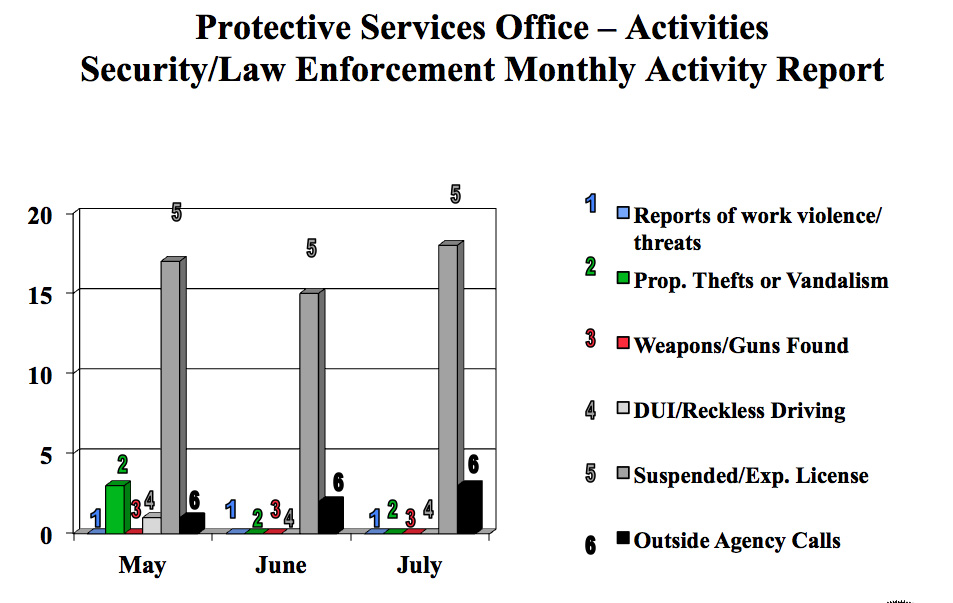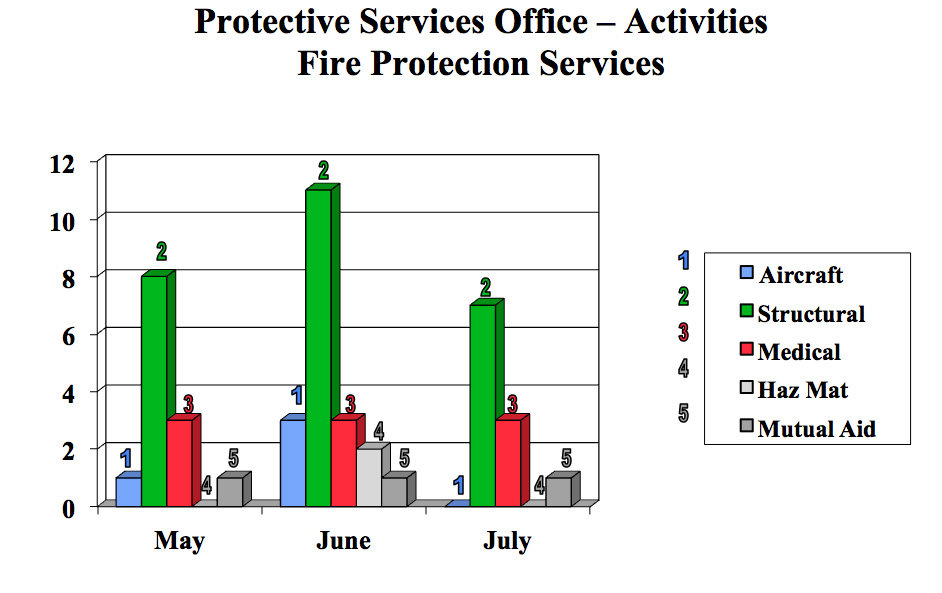NASA Pulls Together National Data to Sleuth Out Air Traffic Improvement Mysteries
by Sharon Lozano
For the first time ever, air traffic researchers can view and analyze archived flight data collected and merged from all air traffic facilities across the U.S., with fast update rates ranging from one second to 12 seconds for every flight’s position. Previously, researchers only had access to national flight data that was similar to internet flight tracking, with one-minute flight updates and no information about flights on the ground at airports. Or, they had access to separate flight data sets from 77 different Federal Aviation Administration (FAA) air traffic facilities, which made research very challenging. NASA’s newly improved tool, the Sherlock Air Traffic Management (ATM) Data Warehouse, merges all of the air traffic facility data to produce analysis-ready, end-to-end flight information at these improved resolutions for the entire U.S. airspace.
NASA is committed to transforming aviation by dramatically reducing its environmental impact and improving efficiency while maintaining safety in more crowded skies. Sherlock will help air traffic management researchers quickly perform large-scale analyses of the U.S. air traffic system, to look for areas where ideas for improvement will have the most benefit in terms of environment, safety and efficiency.
For example, it allows researchers to use actual flight data to answer questions such as, “How much fuel could be saved if all flights into the San Francisco Airport used lower power for their final descent?” Or, “Would more accurate departure schedules reduce delays into busy Northeast airports, and at what rate?” Since new technologies are so costly to deploy in the complex U.S. airspace, finding the regions where they will help the most is very important, as is predicting the benefits to the flying public.
In development since 2009, Sherlock is a crucial piece of the air traffic management research infrastructure used by NASA and its partners. Sherlock includes a traditional database, a big data analytics system, web-based user interfaces and several tools for query and visualization. Located at NASA Ames, the Sherlock ATM Data Warehouse team overcame challenges in correlating and rationalizing data from the 77 different FAA air traffic facilities, often with overlapping and conflicting positions, flight plans, as well as time and airspace references. The raw data include a variety of flight information from live streams of operational facilities, weather observations and forecasts, and other information collected from the FAA, such as traffic advisories and delay status.
Sherlock contains more than 36 terabytes of raw data, with more collected daily. The merged flight data will soon be available for all of the archived data going back to 2011. This will enable researchers to look at very large data sets of many billions of flight tracks, and at trends in the national traffic picture over the past five years, which in turn will help predict future traffic.
While in development, Sherlock supported many research studies with separate FAA flight data. Sherlock’s merged data will streamline future research, such as estimating fuel savings and predicting the time savings that new air traffic control tools will provide. Planned enhancements include the capability to integrate the national flight data with weather data, to show, for example, how flights moved in relation to thunderstorms or other weather events.
NASA Aerodynamic Simulations Reshape Flight for Fuel Efficiency
by Kimberly Williams
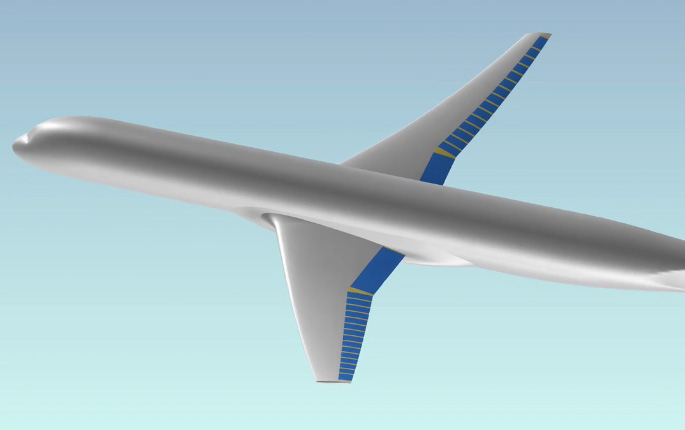
Averaging a half mile per gallon might seem unfathomable to most drivers, but for aircraft carrying hundreds of passengers at high altitude, it’s a huge improvement in fuel efficiency. With the increasing demand for air travel over the past several decades, the use of renewable jet fuel also grows, which is more expensive than the petroleum-based kerosene it replaces.
Aviation companies are looking at technologies, shapes and materials that would transform flight far more dramatically than current advances of the world’s most fuel-efficient commercial airliners. Besides improving aerodynamics and using lightweight composite materials, aerospace engineers are investigating ways to create a more flexible, adaptable aircraft wing design for peak fuel efficiency.
David Rodriguez and his colleague Michael Aftosmis have simulated a distributed flap system on the Endeavour supercomputer at the NASA Advanced Supercomputing (NAS) facility at NASA Ames. Using a standard NASA aircraft model, the researchers were able to determine which shapes work best at various flight conditions. In addition to finding the optimal shape for each condition, their goal was to determine how much better the reshaped wing would perform at each condition than the baseline wing design.
Dozens of full aerostructural optimizations were performed on Endeavour, equating to thousands of individual computational fluid dynamics simulations, with results showing improvements in aerodynamic performance and potential fuel savings in all of the simulation scenarios.
This research was supported by the Aeronautics Research Mission Directorate’s Advanced Air Transport Technology project. For more information about Endeavor simulations for the distributed flap systems, visit: http://www.nas.nasa.gov/publications/articles/feature_Flaps_VCCTEF_Aftosmis.html
Ames Wins 2016 NASA Software of the Year Award
by Ruth Marlaire
NASA recently announced NASA Ames as a co-winner of its 2016 Software of the Year Award. This year, Ames’ software Pegasus5 won the award. Pegasus5 is a revolutionary Computational Fluid Dynamics (CFD) analytical tool that integrates multiple overlapping grids that share information about a vehicle’s aerodynamic performance. The data obtained from such simulations are used to build aerodynamic databases that describe the performance of the vehicle in all flight conditions.
“Receiving this NASA award is an enormous honor,” said Stuart E. Rogers, an aerospace engineer at Ames and one of the developers of the software. “It is extremely satisfying to see how many users have benefited from using this software at NASA, industry and academia.” Norman Suhs from the Army Aviation Research, Development and Engineering Center in Huntsville, Alabama and William Dietz from Kratos Defense & Security Solutions, Inc. in San Diego, California, also were co-developers of the software.
Sponsored by the Offices of the Chief Engineer, Safety and Mission Assurance, and the Chief Information Officer, NASA’s Inventions and Contributions Board evaluated and recommended Pegasus5 for its innovative approach to solving a complex CFD grid-flow problem.
Pegasus5 is designed for multiple purposes, speed and flexibility. It has been applied to dozens of test cases and many real-world problems with great success. At NASA, its uses include the Multiple-Purpose Crew Vehicle Orion command module and launch-abort vehicle, multiple vehicles under development in the Space Launch System program, and in the Space Shuttle program. It also has been used to simulate aerodynamics of the Sierra Nevada Dream Chaser and the SpaceX Dragon capsule.
In areas of science and technology, Pegasus5 has been used to model and simulate any type of fluid flow around submarines and maritime vehicles, internal flows in manufacturing and industrial processes, and bio-medical flows. As an example, it has been used to study the airflow around semi-trucks to investigate drag-reduction devices capable of dramatic fuel savings, leading to reductions in pollution.
In the past, CFD has been used to study blood flow in the human circulatory system. Pegasus5 has the potential to further studies in cerebral blood flow in the Circle of Willis, which is of particular interest to NASA when studying the effects of high-G and zero-G on intra-cranial arterial blood flow in astronauts; it also has applications when studying conditions such as Alzheimer’s disease.
In the education realm, the Pegasus5 code has been released to more than 100 professors and students at many major universities, including Stanford University in Palo Alto, California, Massachusetts Institute of Technology in Cambridge, California Institute of Technology in Pasadena, et al. An important benefit to widely distributing the software is skills training for the next generation of aerospace engineers, due in large part to its portability and ease of use. These schools and their students use the same aerospace modeling and simulation techniques currently as NASA, Department of Defense and industry.
In the 23 years NASA has sponsored this competition, Ames has been selected 13 times as winner or co-winner for Software of the Year Award.
PEGASUS shares the honor of winning the 2016 NASA Software of the Year Award with co-winner Traffic Award Planner (TAP) from Langley Research Center. Pegasus5 was also selected by the Federal Laboratory Consortium (FLC), as winner of the 2016 FLC Far West Regional Award for “Outstanding Technology Development.” FLC awards rank among the most prestigious honors in the Technology Transfer field and are given as a symbol of well-deserved recognition for phenomenal
Ames celebrates it’s diverse culture with exhibits, food and music
The Office of Diversity and Equal Opportunity (ODEO) hosted Diversity & Inclusion Day on Aug. 11, 2016 on Shenadoah Plaza. The Ames Exchange hosted an employee picnic celebrating summer’s end in conjunction with the event. Chicken and beef fajitas were served, along with corn, beans and cupcakes. This event enriches the understanding of our diverse workforce. The objective was to optimize the value of the employees at NASA by leveraging our knowledge, similarities and differences. Participants had cultural exhibits, representing a country, region, or a US state; a NASA directorate; NASA business exhibit; or an area of particular interest to you. Exhibits included artifacts, cultural wear, art, costumes, introduction to foreign language, etc.
Ames Hosts Mentor-Protégé Agreement Signing Between Companies
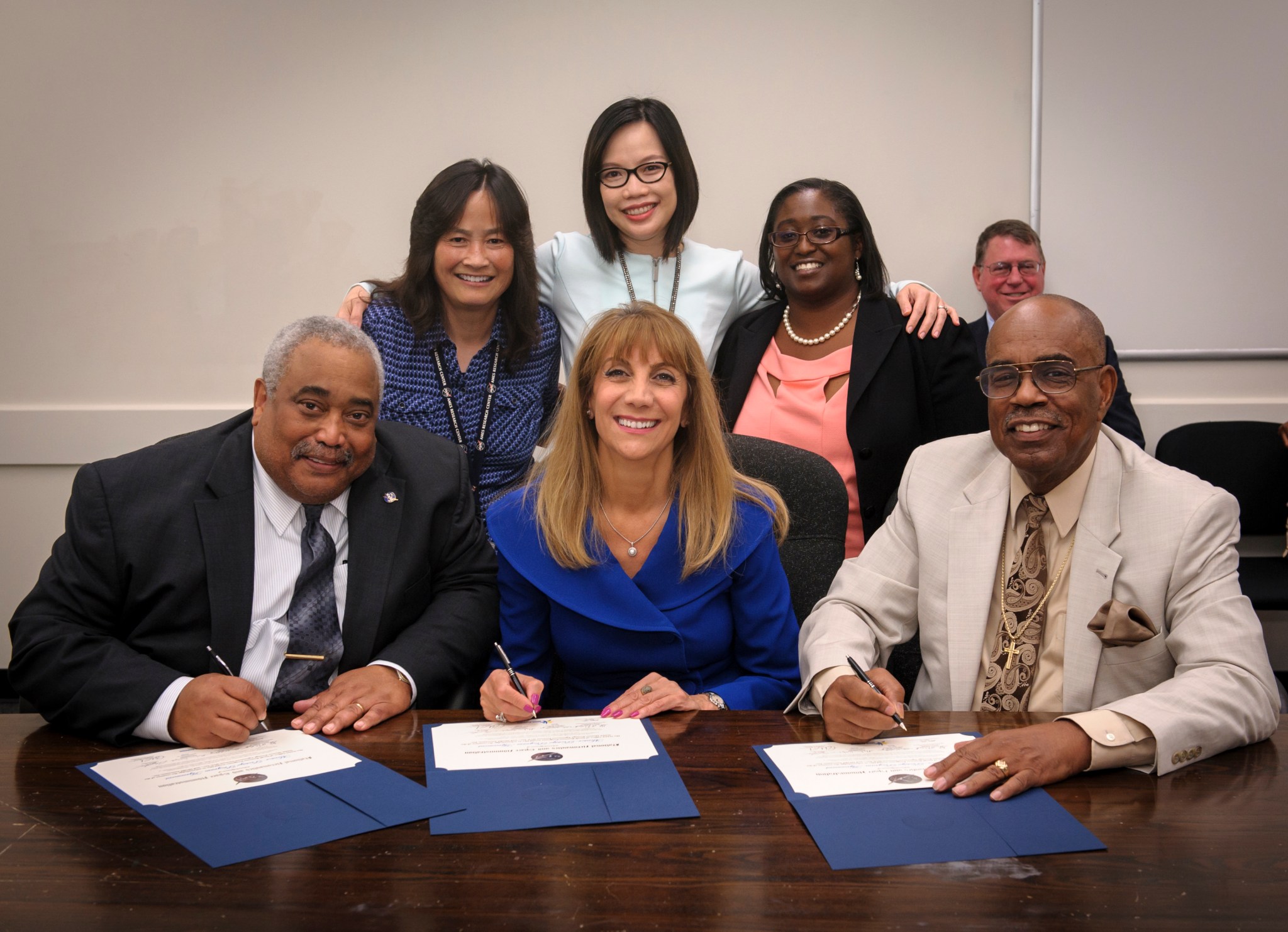
On Aug. 2, 2016, NASA Ames hosted the signing of a Small Business Mentor-Protégé Program agreement between Stinger Ghaffarian Technologies (SGT) Inc and Mori Associates Inc. The NASA Mentor-Protégé Program provides a platform for large companies to assist eligible small businesses with strengthening business and technical capabilities in order to successfully compete for larger, more complex prime contract and subcontract awards. The 12-month agreement is the second of its kind overseen by Ames, fostering a partnership between a NASA prime contractor and a small business.
Ombuds Offices Services Available to Ames Employees
The Ames Ombuds Office provides all civil servants, contractors and students at the center with a supplemental, confidential and informal channel of communication to raise significant issues and concerns that they perceive could impact safety, organizational performance or mission success.
The Ombuds is accountable for conducting informal inquiries, raising issues of concern to appropriate officials and can redirect matters not under the Ombuds’ realm to the appropriate office or organization with an existing administrative system should an individual so desire; for example, the Inspector General, the Office of Equal Opportunity and Diversity, Ames Federal Employees Union, Procurement Ombuds, Chief Counsel and Human Resources.
The Ombuds’ power rests on their reputation for confidentiality, fairness, objectivity, tact and respectful concern for the welfare of all individuals of the NASA community and for the well-being of the agency.
John (Jack) Boyd continues to serve as Ames Ombuds. Lisa Lockyer and Jim Arnold both serve as alternate Ames Ombuds. They can meet you at a location of your choice. You also can work with an Ombuds at another center.
The Ombuds office is located in Building 200, room 205, Mail Stop 200-1A. Boyd can be reached at ext. 4-5222 or at email: john.w.boyd@nasa.gov, and Lockyer can be reached at ext. 4-3009 or at email: lisa.l.lockyer@nasa.gov. Arnold can be reached at ext. 4-5265 or at email: james.o.arnold@nasa.gov The Ombuds website is http://insideames.arc.nasa.gov/life-ombudsoffice.php
Ames Staff and Guest Speakers Present the Year’s Final Summer Series Colloqua
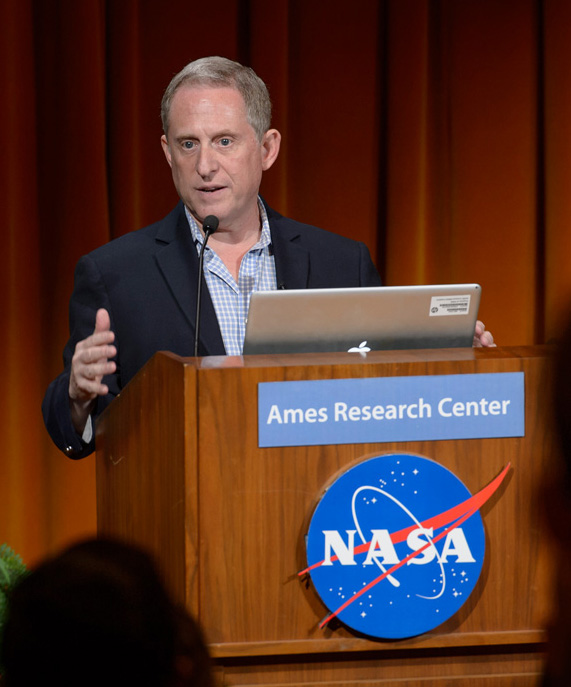
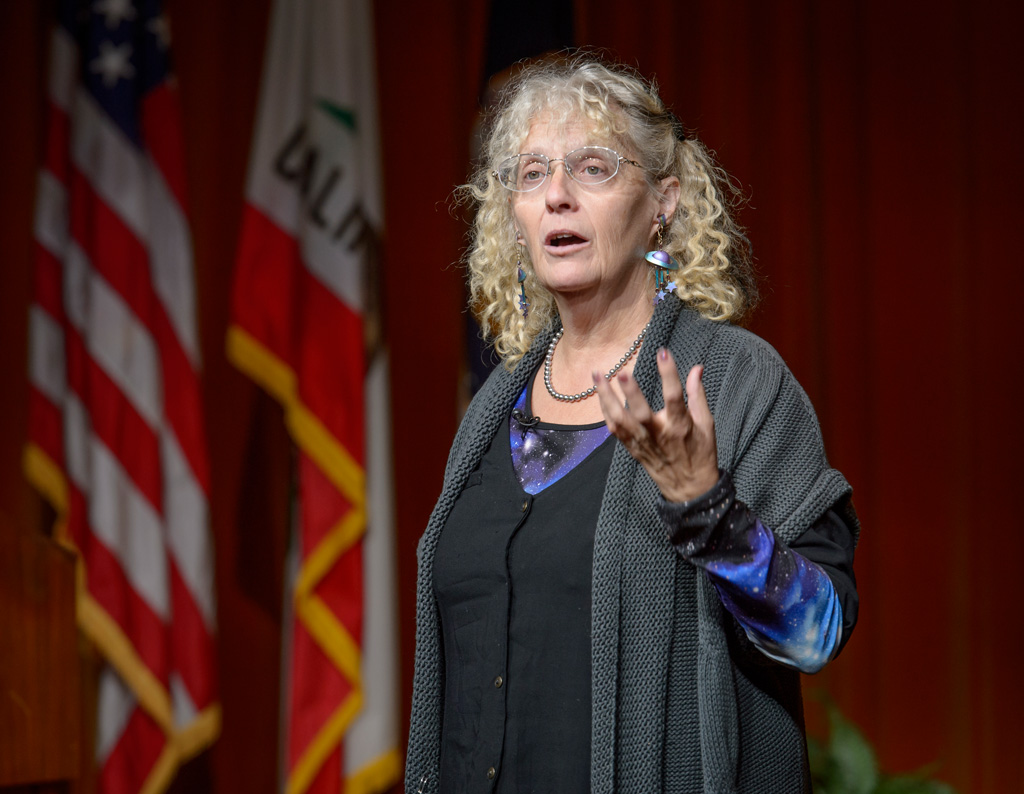
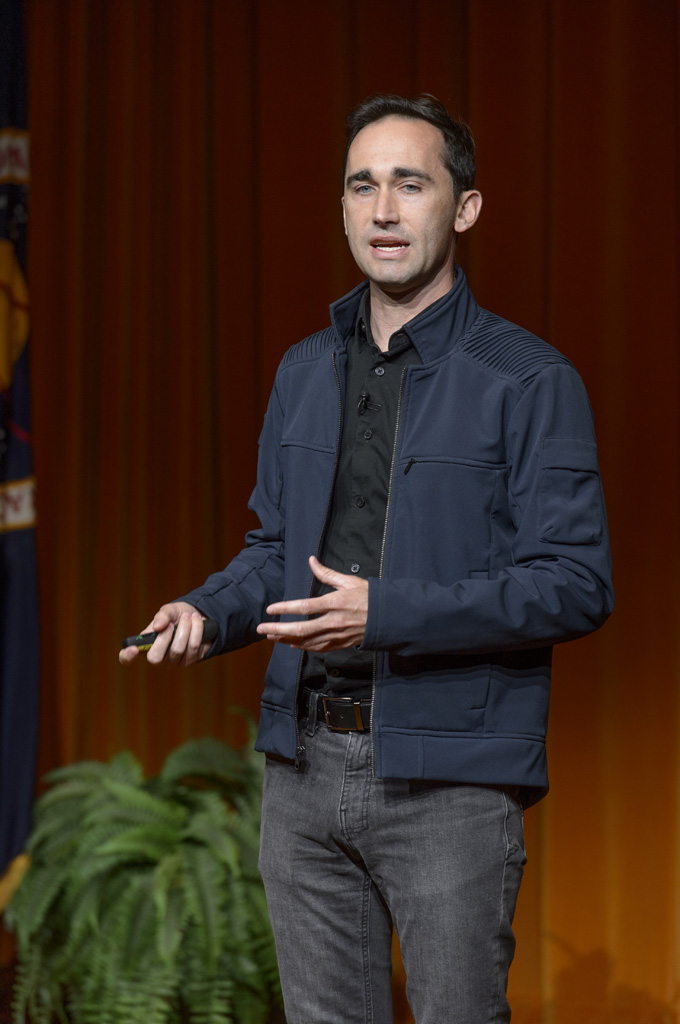
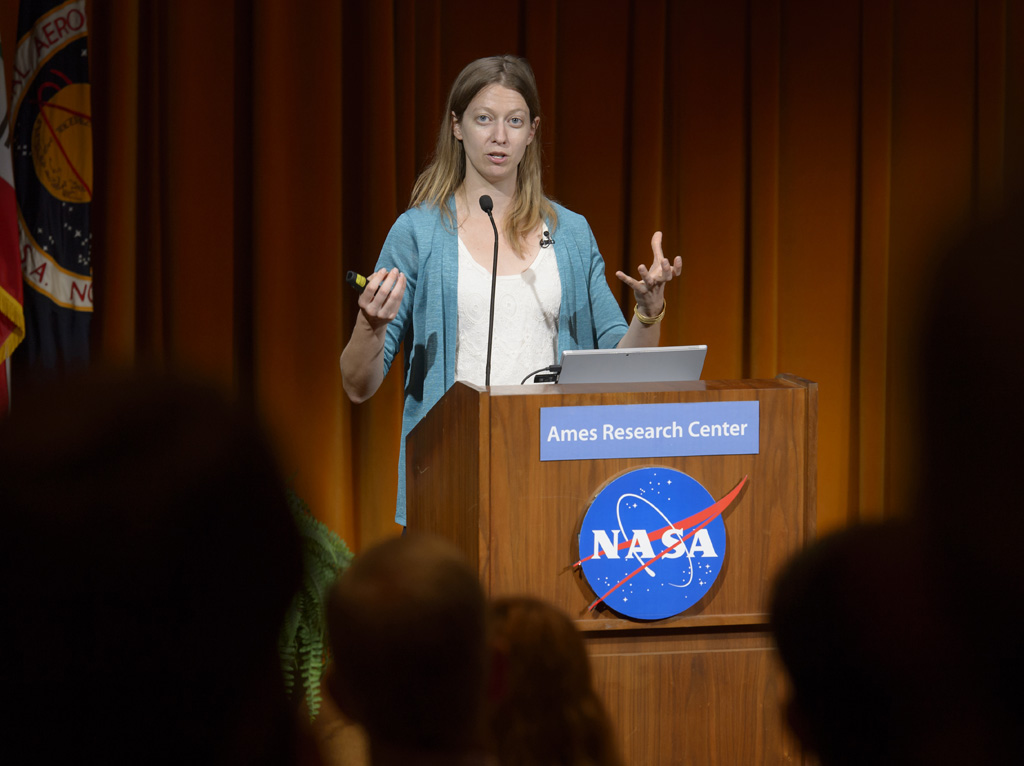
A statistical summary of activities of the Protective Service Division’s Security/Law Enforcement and Fire Protection Services units for the three-month period ending July 2016 is shown below.
Click here to view:
Ames Ongoing Clubs/Monthly Events
NASA Ames Exchange Information
Information about products, services and opportunities provided to the employee and contractor community by the Ames Exchange Council. Visit our web site at: http://exchange.arc.nasa.gov
Beyond Galileo Gift Shop N-235 in the cafeteria, 8:00 a.m. – 2:00 p.m., ext. 4-6873
Visitor Center Gift Shop (Exploration Center), Tues-Fri, 10:00 a.m. – 4:00 p.m., Sat. – Sun, noon – 4:00 p.m., ext. 4-5412
Remember to purchase your baby shower, birthday and holiday gifts at Ames’ two gift shops!
Mega Bites Cafeteria N-235, Manager Jason Hamed, ext. 4-5969, Mon – Fri, 6:00 a.m. – 2:00 p.m., ext. 4-5969/Catering contact Karen Mcintyre, 650 444-2241
The SpaceBar: Subs & Burgers, Bldg. 3, Hours are: Mon – Fri, from 11:00 a.m. – 7:00 p.m. See: http://exchange.arc.nasa.gov/cafe/menu.html for menu items.
NASA Lodge (Bldg. 19) (650) 603-7100
Where to stay when you’re too tired to drive home? What about the lodge?! Current Rates: Bldg. 19 (43 rooms), rate: $65/night ($5 each additional adult); Bldg. 583 A&B (150 rooms), rate: $55/night ($5 each additional adult); B547 rate $60/night (for large groups)
Ames Swim Center (N-109) (650) 603-8025
The swimming pool is now open. Hours of operation are as follows (lap swim only): Mon – Fri, 10:00 a.m. – 1:00 p.m. and M-F 3:00 p.m. – 6:00 p.m. The pool is heated year round. POC: Ryan Storms, pool manager (650) 603-8025. Memberships: Yearly access $350, 3 Month $100, Single day use $5
Exchange Basketball Gym, Building 2, POC: Manager Bryan Henshaw, (650) 603-9717, Hours of operation: Mon – Fri, 11:00 a.m. – 1:30 p.m. and M-F 4:00 p.m. – 7:00 p.m. The basketball gym is a full NBA regulation size court and is free to use.
RV lots available. Call to reserve a space at (650) 604-0698. Civil Servants and Active Military $50/month. Contractors and Retired Personnel $100/month
Chase Park reservations, call ext. 4-4948
NACA Park reservations, call ext. 4-4948
Ames Emergency Announcements
To hear the centerwide status recording, call (650) 604-9999 for information announcements and emergency instructions for Ames employees. You also may listen to 1700 KHz AM radio for the same information.
Ames Cat Network
The Ames Cat Network needs help finding homes for cats trapped at Moffett. They range from feral to abandoned/lost pets. They are tested, altered and inoculated. Call Iris at ext. 4-5824 if you or someone you know are interested in fostering or adopting a cat.
National Aeronautics and Space Administration
Ames Research Center
Moffett Field, CA 94035-1000
The Ames Astrogram is an official publication of Ames Research Center, National Aeronautics and Space Administration.
Managing Editor………………….Matthew Buffington
Editor, Layout and Design……………Astrid Albaugh
Employees can reach the Astrogram Office via email at: astrogram@mail.arc.nasa.gov or by phone at ext. 4-3347.



























